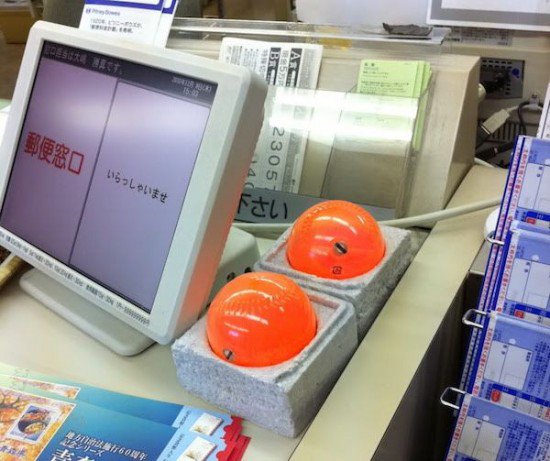Orange Balls of Justice

Pictured above (via Oddity Central) is the checkout counter at a Japanese convenience store, seen from the view of the cashier. There’s a computer terminal that acts as a register, various papers, and two baseballs which, for some reason, are glowing orange. The baseballs are pretty common at similar stores, but they’re not for sale.
They’re for throwing at bad guys.
The balls are known as “bohan ya kara boru,” or “anti-crime color balls.” The idea behind them is simple: if a patron decides to instead be a shoplifter, the store employees can fight back by firing one of these balls at the malfeasor. The balls are hollow spheres filled with orange paint. They’re rather fragile, too; as seen in this video, even a dropped anti-crime ball can cause a great deal of mess. But that’s by design.
When a thrown ball hits a person or a surface, it explodes, splattering a rather wide area in fluorescent orange. The goal is to mark the criminal so that authorities can catch the wrongdoer shortly thereafter. Garish orange-stained clothes aren’t something that one typically sports as part of his or her normal ensemble, making it easy for authorities to pick a fleeing shoplifter out of a crowd. So, if a shopkeeper throws one of these balls at a criminal, he or she need not hit the target — the clerk only needs to throw the ball so that the bad guy is in the splash zone.
The innovation is an off-shoot of vigilantism from the 1980s. At the time, according to Cultural Fact of the Day, many drivers had a habit of passing through toll plazas on Japanese highways without paying the toll. In response, toll booth operators decided pelt to the scofflaws’ cars with raw eggs. While the eggs didn’t stop the non-paying drivers, they did mark the car as one being driven by a toll avoider. The anti-crime color balls are the next-generation application of that same principle.
That’s the idea, at least. But the balls, as the Japan Times reported in 2008, aren’t thrown at criminals all that often. During the first half of 2007, per the Times, these orange balls were present at the scene of 197 store robberies (out of 230 surveyed) but were only used seven times. That said, local law enforcement encourages stores carrying a lot of cash to also have these orange balls displayed prominently at the register. Why? Because the color balls still serve as a deterrent — the threat of even an approximately 3.5% chance of being inked may prevent a crime before it happens.
Bonus Fact: It’s rare to find things covered in orange paint, and major public works such as bridges are rarely an exception. But San Francisco’s Golden Gate Bridge (seen here, but you probably already knew what it looked like) is a hue of orange — “international orange,” if you want to know the official name. That decision was a controversial one. Like most bridges, it probably would have been painted some shade of grey, but unlike most bridges, its architect had other ideas. The architect, named Irving Morrow, per NPR, found a reddish-orange primer on one of the steel beams and thought it would make a perfect color for the new bridge. But to get that done, he had to convince the funding governmental agency, the Department of War, that he was right — which he did via a 29-page memo on the virtues of appropriate color and lighting, available here.
From the Archives: Septuagenarian On Board: Japan’s way of telling you if another driver is older than most.
Take the Quiz: Name these words that have four letters in common with “orange,” but the other two are different.
Related: Orange golf balls. Not recommended for throwing at shoplifters — or, really, anyone else. But if you want to play golf in the snow, they can be pretty useful.
